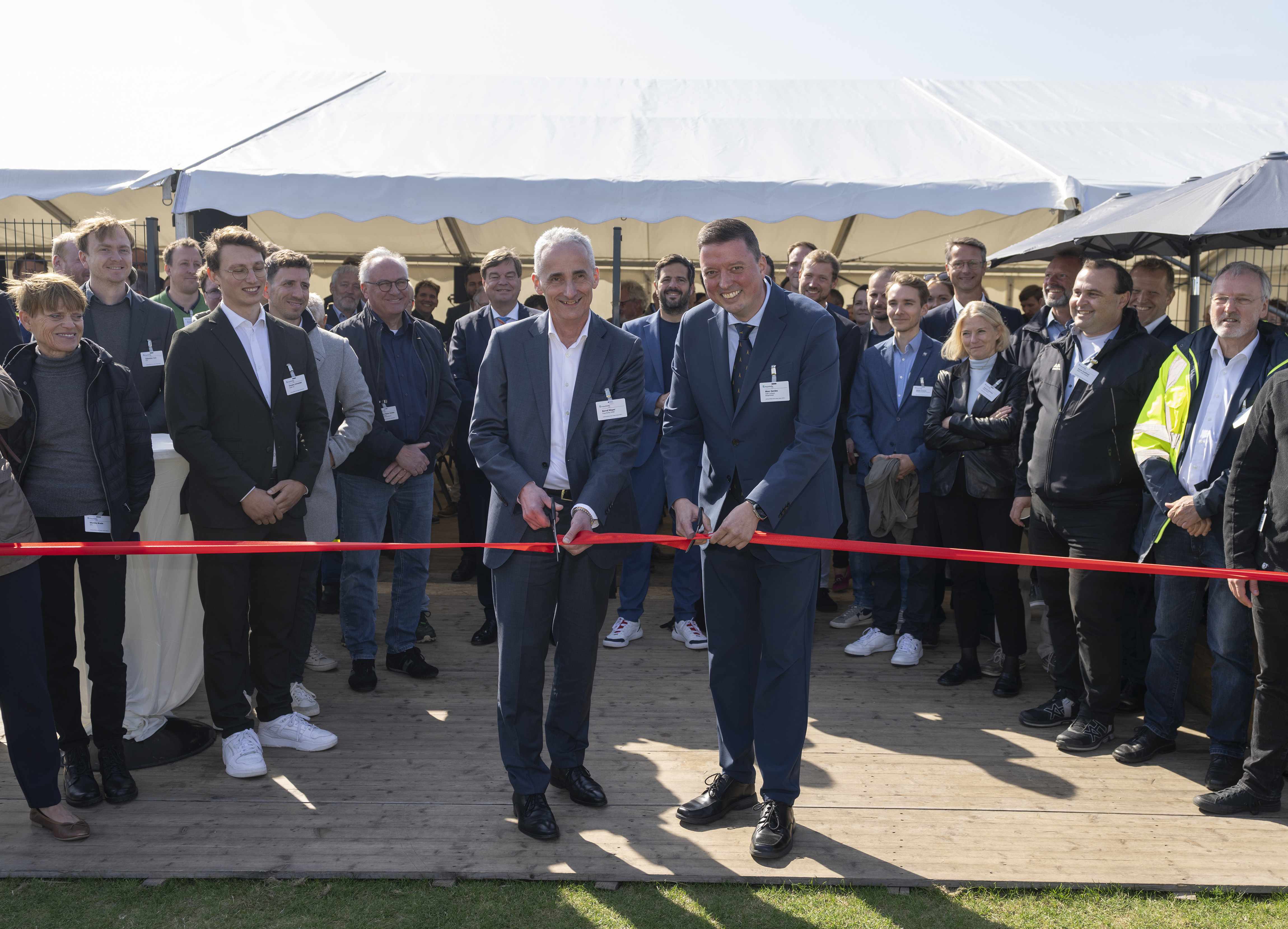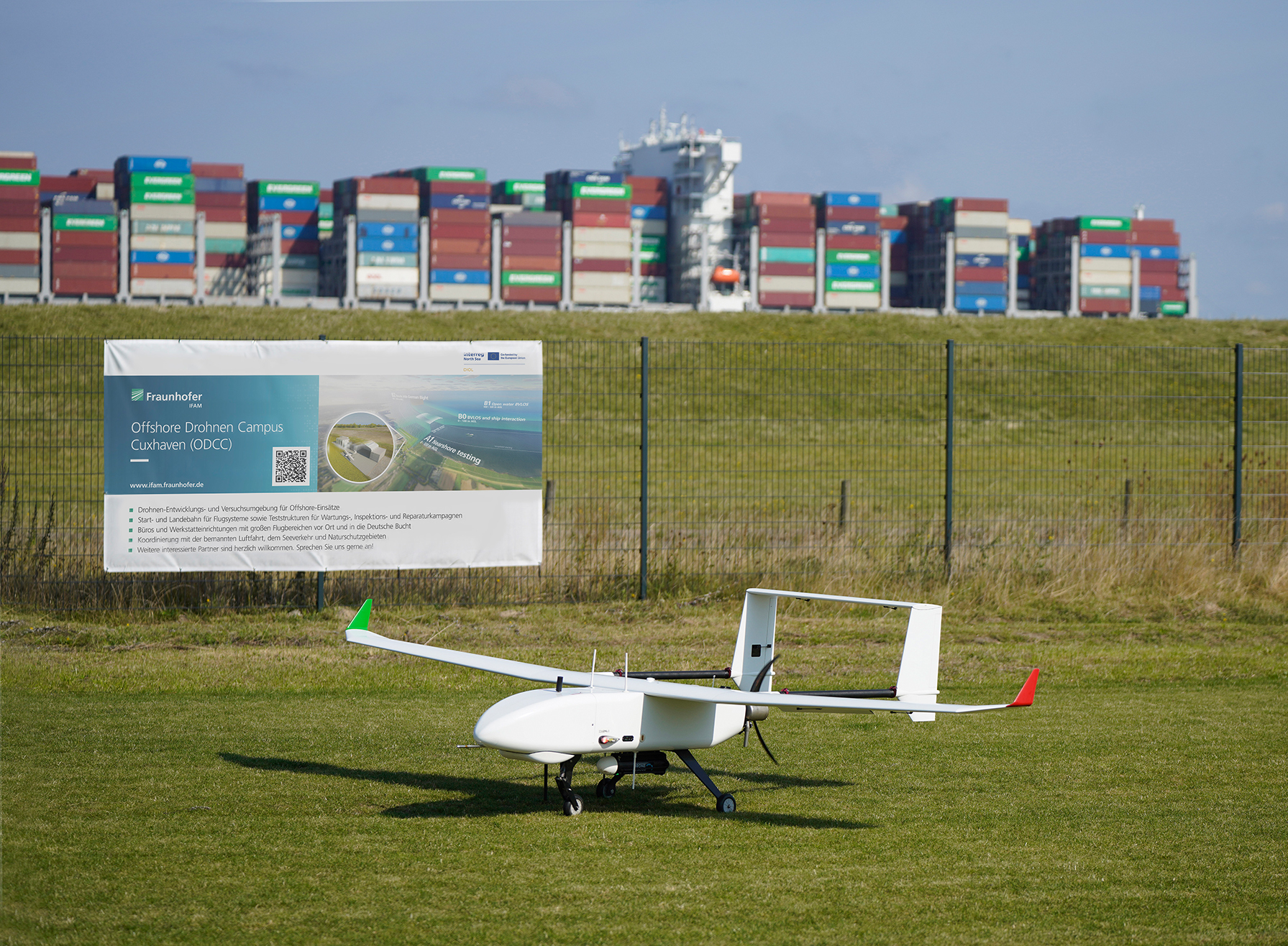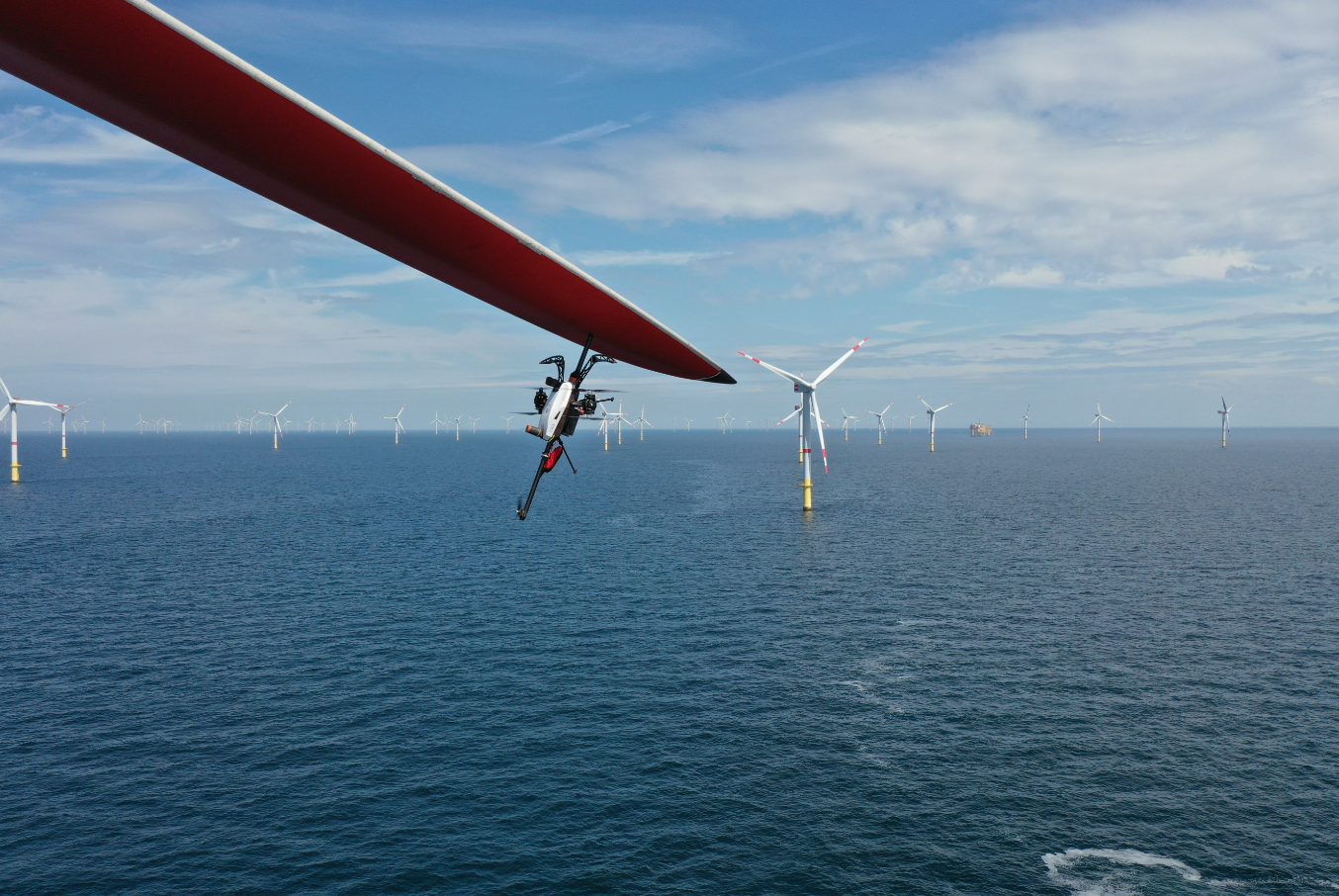Opening of the Offshore Drone Campus Cuxhaven – a milestone for drone research and offshore wind energy



After a year of construction, the new development and test environment for offshore drones was officially opened with numerous guests from business, politics, and science. The Offshore Drone Campus Cuxhaven (ODCC) is operated by Fraunhofer IFAM and serves as a platform for interdisciplinary cooperation between industry and research to advance the development of future-oriented technologies within drone research and application. The focus lies on inspection and maintenance work, monitoring of maritime structures as well as monitoring and transportation tasks using drones. The realistic application scenarios on and above the water offer unique testing opportunities.
Germany has set itself the ambitious goal of further expanding the share of renewable energies across all sectors and thus significantly reducing CO2 emissions. Expansion targets of 20 GW by 2030 and 40 GW by 2040 have already been set for offshore wind energy. The North Sea remains a key area for this planned expansion. In order to ensure the economic viability of wind farms under the challenging environmental conditions, the costs of maintenance and operation must be reduced. The ODCC's research and development services enable this goal to be achieved by improving the efficiency and sustainability of offshore wind energy through the use of drones.
On the coast and above the sea: construction and commissioning of a unique testing infrastructure
The completion of the ODCC marks the beginning of a new era in the development and testing of drones for the offshore sector. A 170-meter-long and 10-meter-wide runway for long-range and heavy-duty drones for material transport, a tower structure for inspection tests as well as office and workshop space are available for a wide variety of issues and research projects.
With its flight areas directly on and above the water, the ODCC site offers realistic test scenarios for the needs-based design of the overall offshore drone system. With the immediate proximity of the flight test areas to the mouth of the river Elbe and the associated possibility of direct flight corridors towards the German Bight and Heligoland, there are extensive opportunities to test different application scenarios.
On Heligoland, the Test Center for Maritime Technologies provides various research areas on the island and in the harbor. Just a few nautical miles off the North Sea Island, a three-square-kilometer test field allows developments to be tested under offshore conditions. In addition, the Fraunhofer-Gesellschaft's research vessel “Joseph von Fraunhofer” is available to accompany tests on the water thanks to its berth in Cuxhaven. The above-mentioned testing possibilities under real-life conditions offer unique opportunities throughout Germany for the continuous development and qualification of offshore drones and the standardization of procedures.
Whether in Cuxhaven, on the island of Heligoland or on the ship – specially trained personnel professionally plan and accompany all missions with unmanned aerial vehicles and provide support in carrying out maintenance and inspection campaigns as well as test and trial flights.
Applied materials research and electronic protection concepts for offshore drones: requirements and solutions
The geographical location and logistical possibilities of the ODCC open excellent testing areas for offshore research, which are necessary for the complex development work through to industrial regular operation. The relevant issues include increasing wind resistance and all-weather suitability, the possibility of validating performance records, regulatory flight approval processes and the development of end effectors for sensory data acquisition and evaluation. Another important development task is the safe energy supply during flight, where the comparison of battery systems, combustion engines and fuel cells is of great interest. Additionally, the impact of drone operations on the environment and nature conservation will be comprehensively examined as part of future test campaigns to ensure that these technologies are used as minimally invasive as possible.
To ensure the success of the missions, the materials and electronics of the drones are crucial and an essential part of the research work. In terms of components, it is important that fault-tolerant drive systems enable safe maneuvering under demanding offshore conditions. Functioning material protection concepts are essential to ensure that electrical components and structural parts can withstand the constant salt load, high humidity, and UV exposure. The compatibility of the end effectors and sensor systems with the offshore drones must also be researched further.
For the safety-based approach to the commercial use of drones, continuous flight monitoring and flight control that is guaranteed at all times is of the utmost importance. This includes, for example, approaches for collision avoidance systems, redundant communication and control units, navigation along a structure under variable environmental conditions and landing on floating structures.
With these interdisciplinary fields of research, Fraunhofer IFAM offers a portfolio to support drone development along the entire value chain and implementation in the industrial offshore sector. The promotion of technology transfer and the implementation of research results in practical applications are central tasks.
Use of airspace: joint integration of manned and unmanned aviation
In addition to drone development and testing, the research field of joint use of airspace by manned and unmanned aviation is an elementary component of the ODCC. With its site in Cuxhaven, Fraunhofer IFAM is therefore an active member of the transnational project “Advanced Air Mobility Initiative Northwest Germany and German Bight”, AAM-NW for short, to actively shape the successive development of airspace and corresponding infrastructures.
The main objective is to simplify and automate the operation and coordination of drones within future airspaces. This will increase safety and provide industry and business with long-term planning prospects and procedural certainty for the regular operation of offshore drones.
To make this project a reality, drone operations require suitable routes, the development of appropriate infrastructure and the procedural standardization and development of suitable operating agreements. In various real laboratories and corridors, the necessary experience is being gathered and operational strategies developed to enable the seamless integration of Unmanned Traffic Management (UTM) into existing Air Traffic Management (ATM) systems.
The initiative is a joint collaboration between the states of Bremen and Lower Saxony, each of which has a different focus. Bremen focuses on the drone control center, while Lower Saxony provides the flight areas and aeronautical infrastructure. This collaboration ensures that the airspace is optimally prepared for Advanced Air Mobility.
Funding Notice
The construction of the Offshore Drone Campus Cuxhaven was funded within the project “Interreg North Sea project DIOL – Develop Innovative Offshore Logistic”.
The project deals with the implementation of the Esbjerg Declaration, which was signed by the Prime Ministers of Denmark, Germany, Belgium, and the Netherlands at the North Sea Summit in Esbjerg on 18.05.2022. Its aim is to turn the North Sea into Europe's “green power plant”. To achieve this goal, eight pilot projects have been defined, each with a different focus.
Duration: 04/2023 - 03/2027
Further information
Photos and PDF for Download
Last modified:
 Fraunhofer Institute for Manufacturing Technology and Advanced Materials IFAM
Fraunhofer Institute for Manufacturing Technology and Advanced Materials IFAM